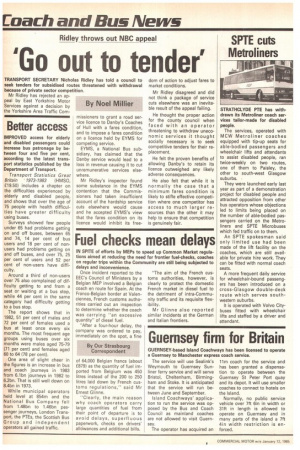Better access
Page 20

If you've noticed an error in this article please click here to report it so we can fix it.
IMPROVED access for elderly and disabled passengers could increase bus patronage by between four and five per cent, according to the latest transport statistics published by the Department of Transport.
Transport Statistics Great Britain 1973-1983 (HMSO, £19.50) includes a chapter on the difficulties experienced by elderly and disabled people, and shows that over the age of 75 people with health difficulties have greater difficulty using buses.
Surveys showed few people under 65 had problems getting on and off buses, between 65 and 74, 14 per cent of bus users and 18 per cent of non users had problems getting on and off buses, and over 75, 25 per cent of users and 52 per cent of non-users have difficulty.
Around a third of non-users over 75 also complained of dif ficulty getting to and from a seat or waiting at a bus stop, while 44 per cent in the same category had difficulty getting to a bus stop.
The report shows that in 1982, 51 per cent of males and 72 per cent of females used a bus at least once every six months. The most frequent age groups using buses over six months were males aged 75-79 (71 per cent) and females aged 60 to 64 (78 per cent).
One area of slight cheer in the figures is an increase in bus and coach journeys in 1983 from 6.1bn journeys in 1982 to 6.2bn. That is still well down on 8.4bn in 1973.
While municipal operators held level at 854m and the National Bus Company fell from 1.48bn to 1.46bn passenger journeys, London Trans port, the PTEs, the Scottish Bus Group and independent operators all gained traffic.
























































































